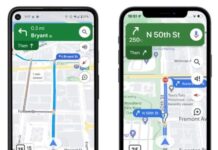KPMG predicts that self-driving cars and mobility services will provide options that will reduce consumer desire to own cars, particularly sedans. Pushing a button for mobility services competes with the utility of sedans, and both give consumers the freedom to buy the car they really want to own or utilize mobility by the trip. In fact, KPMG projects that sales of personally-owned sedans in the U.S. will drop precipitously – from 5.4 million units sold today to just 2.1 million units by 2030.
In addition, according to the KPMG report, the transportation market will evolve from a national or regional one to 150-plus “islands of autonomy” – metropolitan areas that each have their own distinct mix of consumer travel needs delivered by autonomous mobility services.
“Across the world, a $1 trillion market is swiftly developing around a new and disruptive transportation mode: driverless vehicles coupled with mobility services,” said Gary Silberg, (@slfdriveSilberg) Automotive Sector leader at KPMG LLP. “However, the adoption of this new transportation mode will not be immediate, and it will not be everywhere. Instead, it will arrive metro market by metro market in what we call ‘islands of autonomy.’ Each island will need a unique mix of vehicles to meet unique demands, which will greatly impact the breakdown of the car park, especially sedans.”
Follow the conversation on @KPMGUS_News using the hashtags: #KPMGauto and #islandsofautonomy. For more information on KPMG’s Islands of Autonomy research, please visit: www.kpmg.com/us/automotive.
In the United States, there are 169 communities of 300,000 persons or more — in Census Bureau terms, Combined Statistical Areas (CSAs) comprised of cities with distinct metropolitan centers economically and socially linked to surrounding areas. Each of these CSAs fit the demographics of an island of autonomy.
To gain a better sense of the individual nature of markets using geographic information systems (GIS), KPMG analyzed actual anonymized cell phone ping data that identified the location (longitude and latitude) and time of travel for individual trips within prototypical American cities — Chicago, Atlanta and the greater Los Angeles-San Diego metropolitan area.
The research revealed different segmentation within each island market based on miles traveled, average trip duration, and estimated vehicle occupancy. KPMG’s findings showed that each island will require a different mix of vehicles and services to fit the island’s trip mission characteristics.
To identify these mixes of vehicles, auto manufacturers must analyze the data of trips according to four factors— environment, duration, miles, and velocity and occupancy — but for each kind of trip mission.
“This creates an extremely complex problem for today’s OEMs, as they can no longer segment markets merely by traditional vehicle segment methodologies to create a vehicle that covers all user needs,” Silberg added. “Instead, the OEMs that win will be those who identify the correct product portfolio within billions of individual trips across hundreds of islands.”
The Demise of the Personally Owned Sedan
The rise of autonomy and Mobility-as-a-Service (MaaS) in the 169 island markets will transform the car market, most heavily impacting the sedan class. Self-driving vehicles and mobility services provide options that will reduce consumer desire to own cars, particularly sedans.
“The concentration of personal automobile ownership declines in the sedan segment will lead to deeper disruption of the markets than OEMs have previously anticipated,” says Tom Mayor, Strategy leader for Industrial Manufacturing at KPMG LLP. “Several OEMs will likely close plants and exit the segment entirely. At these volumes, we would expect the current 10 OEMs serving the U.S. market with more than 800,000 sedans per year to contract to only three or four.”
This complex pattern of development puts new emphasis on automakers to capture the value of individual trips consumers take on these islands—their duration, the number of miles, their start and end points, their occupancy, and their mission—if they are to succeed.
Mayor adds that “profit pools are shifting. The good news for OEMs is that a trillion-dollar market will arise around mobility. The key to unlocking this upside is developing trip-by-trip understanding of consumer needs in each island, aggregating across the islands to find scale and then developing new classes of vehicles specifically designed to optimally meet the varied trip-level needs of consumers who will hail for most trips rather than own or lease.”

























